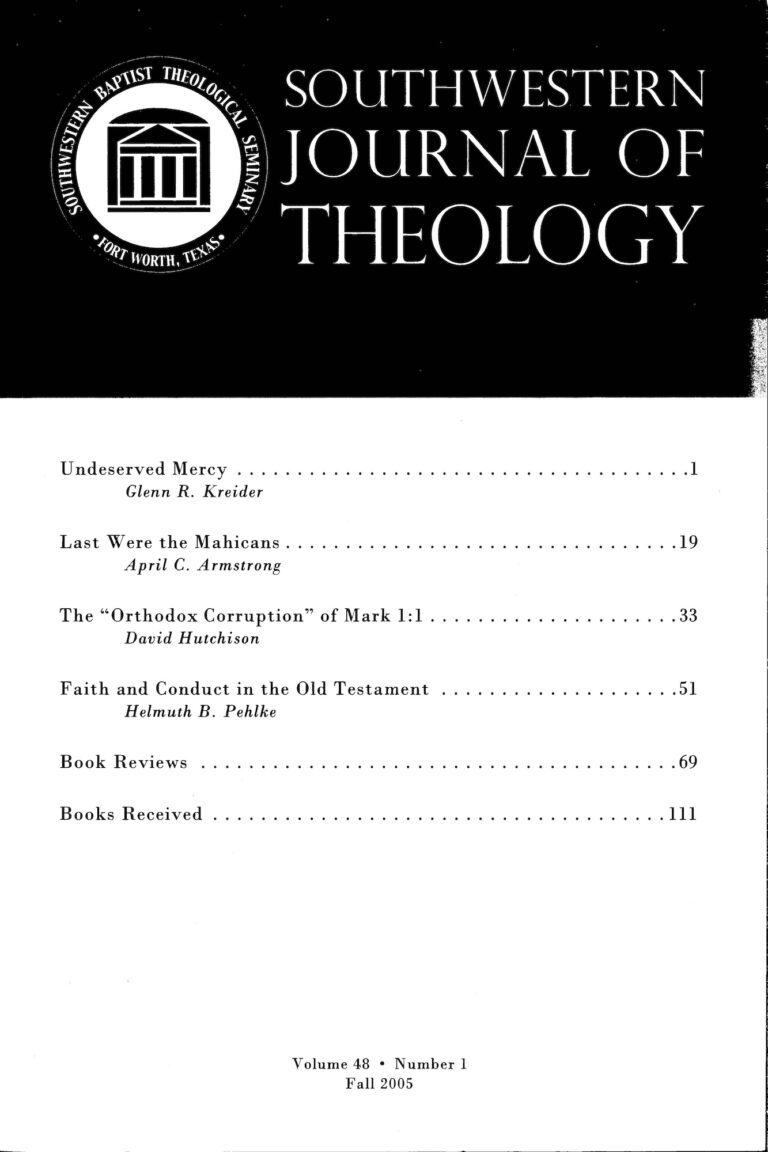
Southwestern Journal of Theology (48.1)
Southwestern Journal of Theology
Volume 48, No. 1 - Fall 2005
Editor: Paige Patterson
By Ronald J. Allen. St. Louis: Chalice, 2004. 152 pages. Softcover, $19.99.
Since the days of Socrates, Plato, and Aristotle, the art of public speaking has most often been reviewed, discussed and evaluated by those who were doing the speaking rather than those who were doing the listening. In 1999, a team of homileticians from Christian Theological Seminary, Indianapolis, received funding from Lilly Endowment, to conduct a study solely based on information they received by interviewing people who listened to sermons. The study team asked 263 lay people from twenty-eight different congregations, consisting of African Americans, non-Hispanic Europeans and other ethnically mixed individuals to be their teachers. They asked this question, “Teach us how you listen to sermons so that we can help ministers become effective preachers.” From their interviews, Hearing the Sermon: Relationship/Content/Feeling, by Ronald J. Allen was written as one volume of a four volume series. Allen was also instrumental in the completion of the other three volumes, Listening to Listeners: Homiletical Case Studies; Believing in Preaching: What Listeners Hear in Sermons; and Make the Word Come Alive: Lessons from Laity. This resource was developed as a tool specifically to help preachers understand the factors that influence how people listen to sermons with the intent that they might become more effective in their preaching.
Based on the responses of the listeners, the survey team discovered that each person listens to the message by his or her pastor in one of three ways. There are those that listen based on the content of the message they expect to hear. Others listen based on the relationship that they have with their pastor. Still others respond to the preaching of their pastor based on whether it moves them. Thus, Hearing the Sermon from the hearer’s perspective is not based on the ability of the speaker but on the relationship that the listener has to the pastor, or on the content that is heard in the message or on how it makes the hearer feel.
Chapter one explains the process by which the team developed their thesis. Of the 263 people surveyed, it was determined that most listeners fall into one category over the other two based on their responses to the interview process. It was also discovered that even though listeners fall into one setting over another, all three settings interact with one another within any given individual. In chapters two through five, the author details his study of each setting indicating what are the characteristics of listening in each setting along with how the settings interact with one another. Equipped with this information, the pastor can answer the question, “What can the preacher do to appeal to the listener on each setting?” (17) The final chapter reflects on how individuals hear the same sermon but based on their setting of ethos, logos, or pathos respond differently.
The strength of this work lies in the fact that the author acknowledges that preaching can and will affect the way people respond. The act of preaching is God’s plan for revealing His redemption to mankind. Allen has attempted to aid the preacher in connecting to those who sit under his tutelage by the means of the weekly preaching event with the insights of how different people hear the sermon. The fallacy of the text lies in the emphasis that the research team has placed on the importance of man’s ability rather than God’s. For example, the sermon passage used in the text illustrates the point well. It is an allegorical method of preaching that focuses on the social gospel as a means for repentance. The author explains how one should approach preaching the text with regard to those who listen from one of the settings; logos, ethos, or pathos. Although it will be helpful to understand how people hear the sermon, the main purpose of the preacher is to “Preach the Word” from an expositional approach and trust the results to the work of the Holy Spirit. With a proper view of preaching, this text will be helpful to the pastor who desires to communicate the truth of scripture to his congregation.





